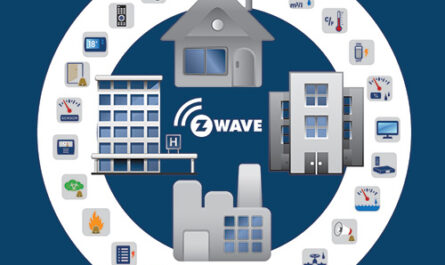The Virtual Kitchen Phenomenon
Ghost kitchens, also known as virtual or cloud kitchens, have gained tremendous popularity over the last couple of years. A virtual kitchen is a commercial cooking facility that does not have a traditional “front of house” dining area and instead focuses solely on the preparation of food for delivery or pickup. They allow restaurant brands that do not have their own physical storefront to operate exclusively through delivery apps and websites. By cutting out dining space and other operational costs, virtual kitchen enable both new and established restaurant brands to significantly lower their overhead. This popularity is due to changing consumer preferences towards delivery and takeout during the pandemic as well as the rise of third-party delivery apps like DoorDash, UberEats and Grubhub that allow these virtual restaurants to connect with customers efficiently.
Business Model Disruptions and Opportunities
The emergence of virtual kitchen challenges the traditional restaurant business model in major ways. For existing restaurants, virtual kitchen provide an opportunity to explore new concepts or cuisines under different brand names without investing heavily in another physical location. This allows restaurants to test new ideas, expand territories and diversify menus with relatively lower risks. Major chains like Chipotle, Panera Bread and Chick-fil-A have established virtual kitchen brands to gain footholds in new markets. For fledgling restaurateurs or chefs without access to prime real estate, virtual kitchen lower the barrier to entry, allowing them to focus on food quality instead of other operational aspects. The model also creates efficiencies through centralized commissary kitchens, doing away with real estate, front-end staff and other fixed costs. This has attracted investment from private equity firms, accelerating the growth of third-party operators running multiple virtual brands from centralized hubs.
Scaling Through Delivery Partnerships
One of the main drivers of the ghost kitchen boom has been partnerships with major delivery platforms. Through preferential treatment and promotions, companies like DoorDash have helped selected virtual kitchen gain rapid visibility and scale operations to multiple cities. Virtual restaurants are increasingly optimized to suit the algorithms and preferences of these delivery apps. Curated menus with fewer SKUs, modular standardized dishes and tightly controlled preparation times maximize orders per kitchen by leveraging predictive analytics and demand forecasting. The data and feedback from deliveries also help virtual kitchen quickly improve offerings. This symbiotic, delivery-first model relies less on word-of-mouth or dine-in footfalls and allows brands to test multiple concepts simultaneously using the same physical space and staff. With delivery now accounting for over 50% of total restaurant sales in some cities, virtual kitchen partnerships promise new revenue streams even for legacy brands facing post-pandemic uncertainties.
Regulatory Hurdles and Safety Concerns
The rise of virtual restaurants has also faced some challenges. Zoning and licensing laws have not kept pace with the emergence of delivery-only models, creating ambiguity regarding their classification. While some cities have made efforts to streamline certification for ghost kitchens, others argue they should fall under the same regulations as traditional restaurants. Safety is another concern as delivery-based operations without dine-in customers means less oversight. Virtual kitchens packed into shared spaces have faced criticism over hygiene standards, waste disposal practices and other public health factors. Third-party operators are addressing these issues by publishing standard operating procedures, implementing regular food safety audits and centralizing commissary operations for virtual brands under the same roof. However, as the segment continues scaling rapidly, regulatory compliance will remain crucial to protect consumers and workforce while fostering innovation.
The Future is Virtual
Overall, ghost kitchens are widely seen as the future of the restaurant industry by major investors and food service analysts. While some predict consolidating supply chains and delivery partnerships may commoditize certain segments, the model also promises immense diversification opportunities. Virtual restaurants allow chefs to globally export their concepts with relatively lower capital commitment. Nimble virtual kitchen startups can test multiple ethnic or niche food concepts using the same infrastructure. By partnering strategically, both independent operators as well as legacy chains can leverage delivery economics and big data to expand geographically. With food delivery predicted to become a $80-$100 billion market in the US, virtual kitchen are poised for exponential growth by catering directly to rising consumer demand and preferences for online ordering. Their scalable operating model and ability to deploy capital efficiently suggests that while the restaurant business may change dramatically, virtual restaurants are here to stay.
*Note:
1. Source: Coherent Market Insights, Public sources, Desk research
2. We have leveraged AI tools to mine information and compile it




